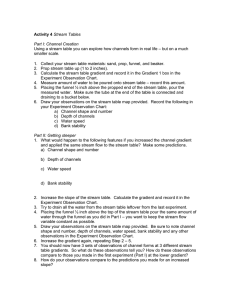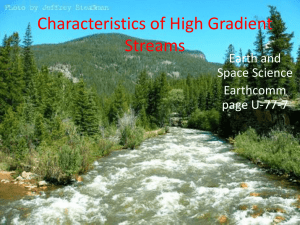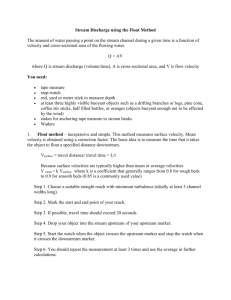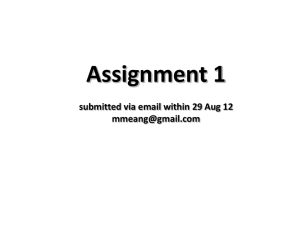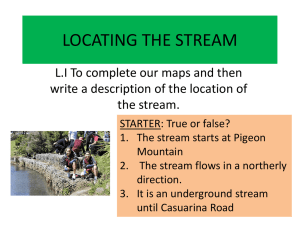WWUnit1Act4
advertisement
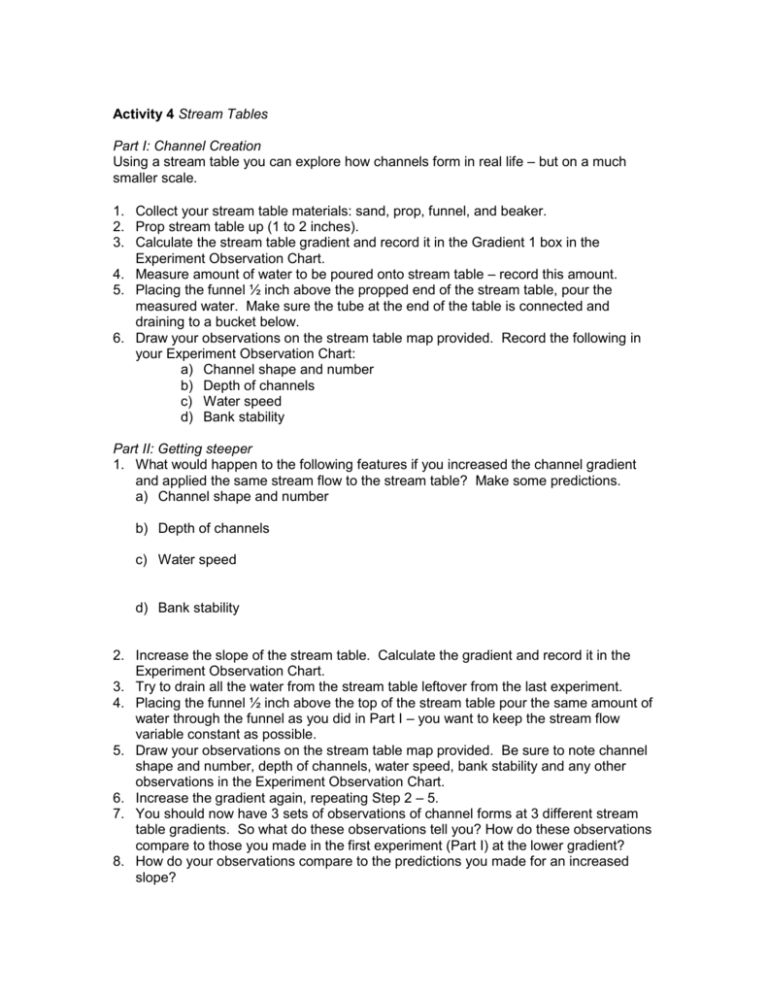
Activity 4 Stream Tables Part I: Channel Creation Using a stream table you can explore how channels form in real life – but on a much smaller scale. 1. Collect your stream table materials: sand, prop, funnel, and beaker. 2. Prop stream table up (1 to 2 inches). 3. Calculate the stream table gradient and record it in the Gradient 1 box in the Experiment Observation Chart. 4. Measure amount of water to be poured onto stream table – record this amount. 5. Placing the funnel ½ inch above the propped end of the stream table, pour the measured water. Make sure the tube at the end of the table is connected and draining to a bucket below. 6. Draw your observations on the stream table map provided. Record the following in your Experiment Observation Chart: a) Channel shape and number b) Depth of channels c) Water speed d) Bank stability Part II: Getting steeper 1. What would happen to the following features if you increased the channel gradient and applied the same stream flow to the stream table? Make some predictions. a) Channel shape and number b) Depth of channels c) Water speed d) Bank stability 2. Increase the slope of the stream table. Calculate the gradient and record it in the Experiment Observation Chart. 3. Try to drain all the water from the stream table leftover from the last experiment. 4. Placing the funnel ½ inch above the top of the stream table pour the same amount of water through the funnel as you did in Part I – you want to keep the stream flow variable constant as possible. 5. Draw your observations on the stream table map provided. Be sure to note channel shape and number, depth of channels, water speed, bank stability and any other observations in the Experiment Observation Chart. 6. Increase the gradient again, repeating Step 2 – 5. 7. You should now have 3 sets of observations of channel forms at 3 different stream table gradients. So what do these observations tell you? How do these observations compare to those you made in the first experiment (Part I) at the lower gradient? 8. How do your observations compare to the predictions you made for an increased slope? 9. Was the experiment successful in determining the effect of channel gradient on channel form? What would you do differently if you did the experiment again? Part III: The Scientific Method You’ve done the scientific method in Part II. Now in hindsight, write it out. Include your hypothesis (1), materials, methods (2-4), observations (5), results (7-9) and conclusion. When writing a conclusion it can be useful to think about future experiments in light of what you learned in the one you just finished. In your conclusion include what you found out by doing the experiment in Part II but also consider how the following stream table scenarios might affect channel shape, depth of channel, water speed and bank stability: a) Increased stream flow. b) Added sticky clay to the channel banks. c) Put vegetation in the channel. d) Put vegetation on top of the banks. e) Increased the sediment size (added gravel to the sand). Experiment Observation Chart Gradient 1 = Channel shape and number Depth of channels Water speed Bank Stability Other observations Gradient 2 = Gradient 3=
